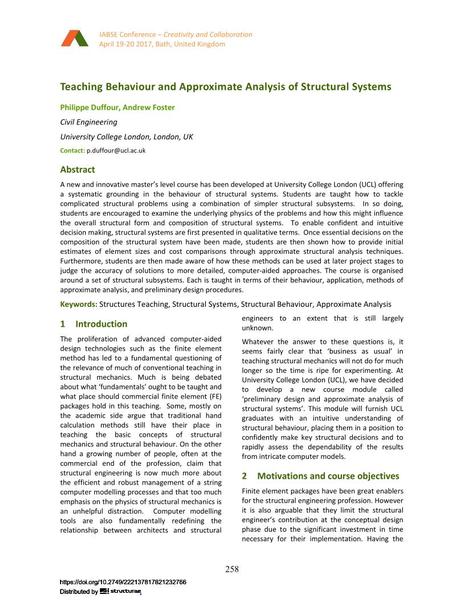Teaching Behaviour and Approximate Analysis of Structural Systems

| Auteur(s): |
Philippe Duffour
Andrew Foster |
|---|---|
| Médium: | papier de conférence |
| Langue(s): | anglais |
| Conférence: | IABSE Conference: Creativity and Collaboration – Instilling Imagination and Innovation in Structural Design, Bath, United Kingdom, 19-20 April 2017 |
| Publié dans: | IABSE Conference Bath, April 19-20, 2017 |
| Page(s): | 258-259 |
| Année: | 2017 |
| DOI: | 10.2749/222137817821232766 |
| Abstrait: |
A new and innovative master’s level course has been developed at University College London (UCL) offering a systematic grounding in the behaviour of structural systems. Students are taught how to tackle complicated structural problems using a combination of simpler structural subsystems. In so doing, students are encouraged to examine the underlying physics of the problems and how this might influence the overall structural form and composition of structural systems. To enable confident and intuitive decision making, structural systems are first presented in qualitative terms. Once essential decisions on the composition of the structural system have been made, students are then shown how to provide initial estimates of element sizes and cost comparisons through approximate structural analysis techniques. Furthermore, students are then made aware of how these methods can be used at later project stages to judge the accuracy of solutions to more detailed, computer-aided approaches. The course is organised around a set of structural subsystems. Each is taught in terms of their behaviour, application, methods of approximate analysis, and preliminary design procedures. |
0.09 MB
- Informations
sur cette fiche - Reference-ID
10292861 - Publié(e) le:
27.01.2019 - Modifié(e) le:
21.05.2021



